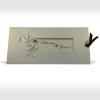Hello,
I am wondering if anyone can help. I am looking to add a simple shadow to some invitation cards (on the sides) - please see the attached 'invitation card shadow' image to show an example of what I am looking to achieve. The two 'to add shadow files' are the example files that I am looking to add a realistic shadow to.
The images have been scanned, but I feel that adding the shadow will allow it to look more realistic (like it has been taken on a camera).
Can anyone help?
Thanks,
Oodya
I am wondering if anyone can help. I am looking to add a simple shadow to some invitation cards (on the sides) - please see the attached 'invitation card shadow' image to show an example of what I am looking to achieve. The two 'to add shadow files' are the example files that I am looking to add a realistic shadow to.
The images have been scanned, but I feel that adding the shadow will allow it to look more realistic (like it has been taken on a camera).
Can anyone help?
Thanks,
Oodya






















